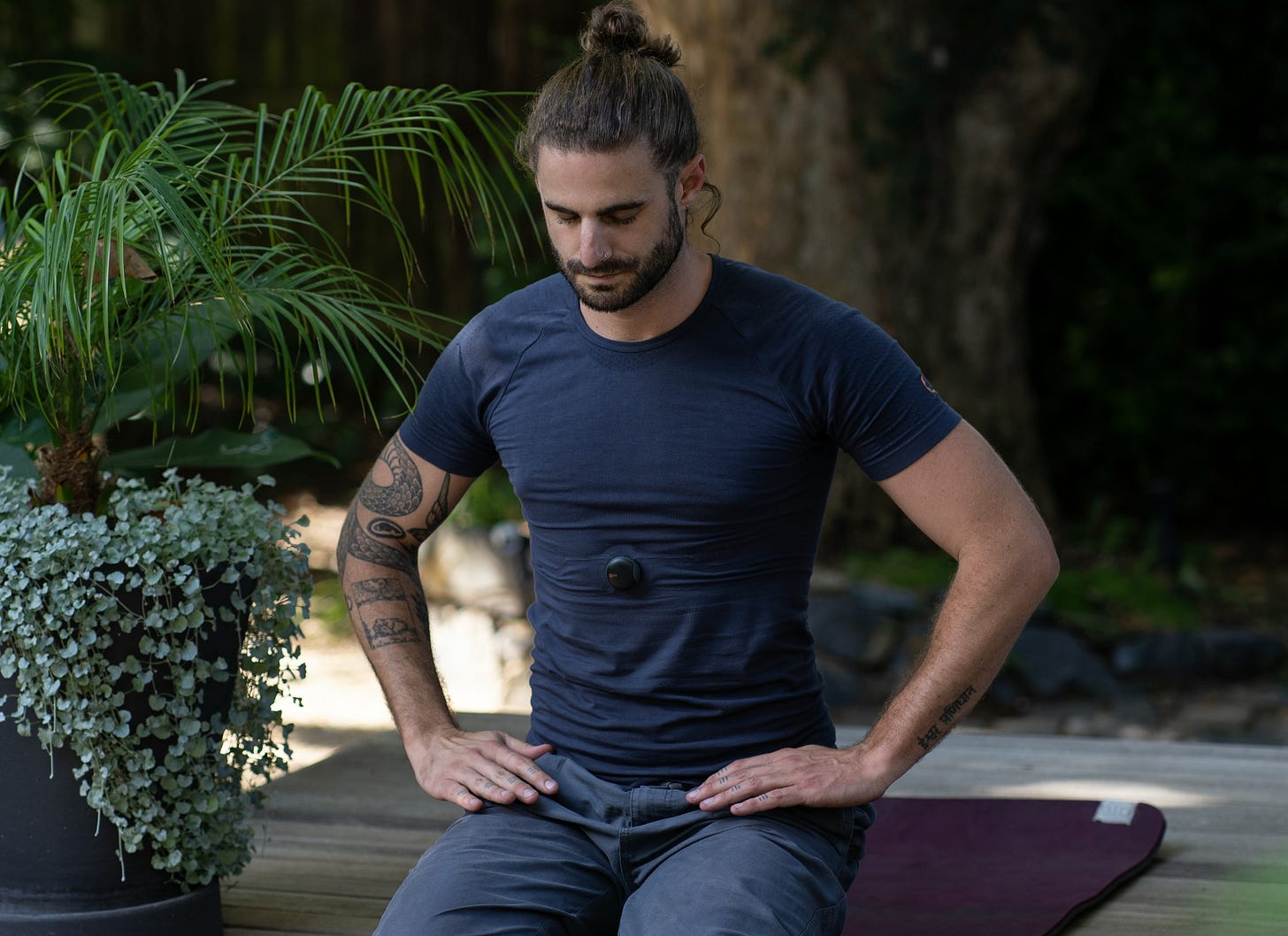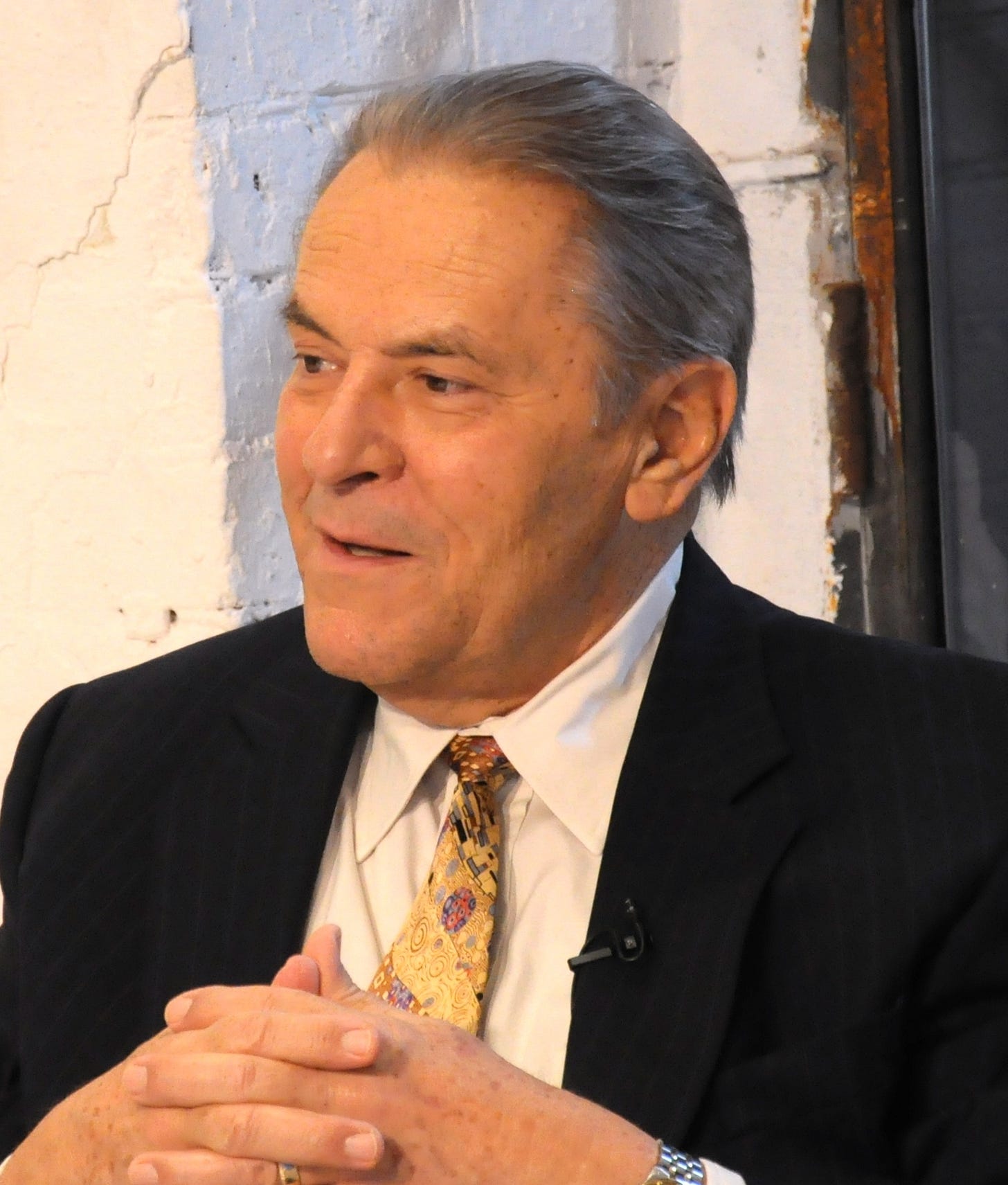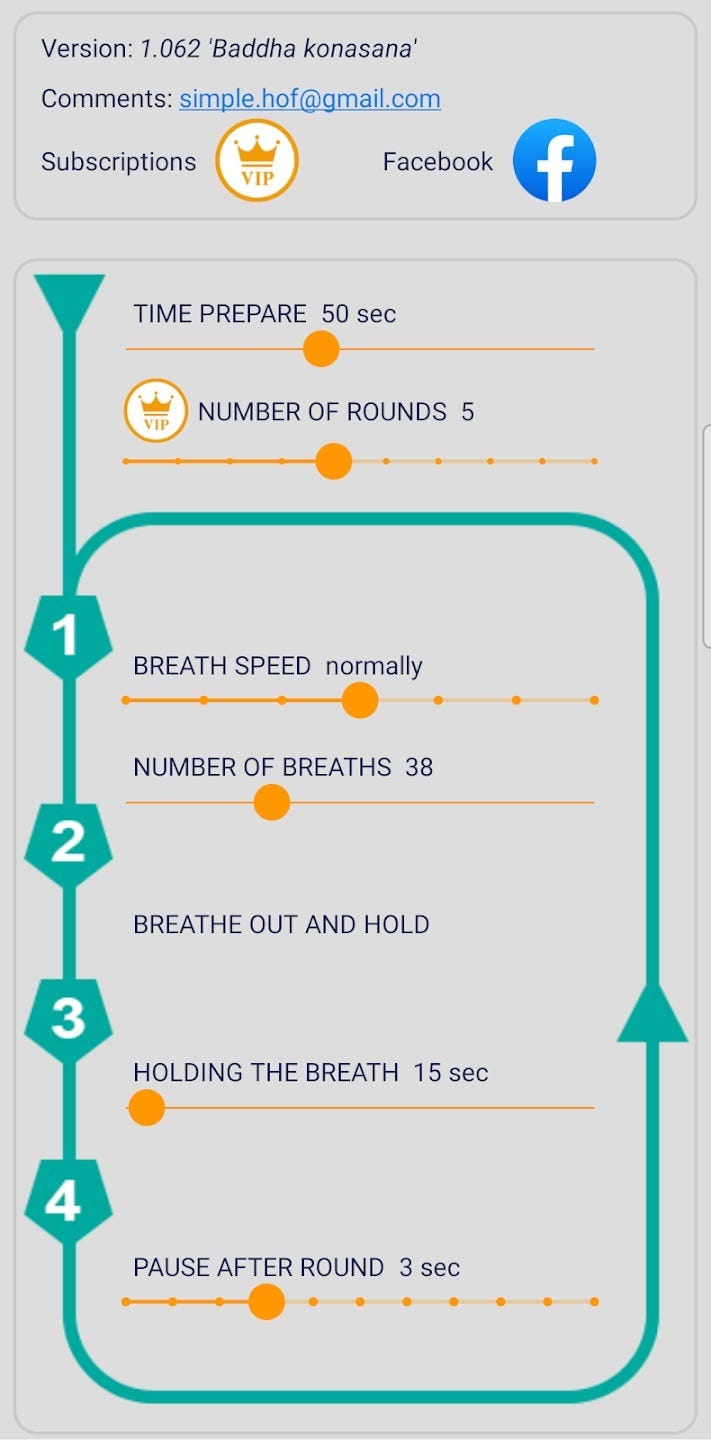Which way is the best, and how, to do breathwork?
Discover the Best Breathwork Technique, with a Step-by-Step Guide, for Relaxation and Wellness to reduce stress, anxiety and energize your day!

One of the things we most take for granted, breathing, may be our greatest superpower, or at least make you feel as if you’ve just had the strongest caffeinated coffee in the morning (!) if you do it right! Plus, according to studies, give you stress reduction, anxiety relief and many, many, more benefits.
I got into breathwork because I was suffering from anxiety and depression and looking at different solutions (see Whichwayhow yoga and Whichwayhow meditation (all to come)—I am my own test-dummy!)
I had to remove caffeine from my morning routine because research showed it may have contributed to my insomnia (see Whichwayhow insomnia-to come) and so I was also feeling sluggish first thing.
I tend to overthink and worry about everything from bills to my relationships to work, to writing this. Plus, I’m an addiction, anxiety and depression counsellor, so you could say I know my subject well!

Heck, even Jordan Peterson has anxiety and he’s a much better counsellor than I’ll ever be, and he tried a breathwork solution, too! (More of that later!)
I can feel stress about something for no reason with my wife – how can you put plastic in the organic recycle bin?!? – so I don’t claim to be a guru, or have any spiritual attraction to breathwork, but I think I may have found something here. And, as I always say, my problem is your solution at Whichwayhow.com!
In the beginning, tbh, I just wanted a nuts ‘n’ bolts solution that might help calm me down and reduce my worries because I was so worried; about everything.
If you’re in the market for the same, I have done the work for you, and researched different ways to do breathwork to calm down and re-energise before I tell you which way works best for me, and how to do it.
If this ONE article doesn’t save you the annual subscription fee of £50, in morning cappuccinos for a month, then it will have failed. You’ll see why, hopefully, and it will be a breath(!) of fresh air! I’m breathless(!) to start and this should be fun if you’re in the market for alternative esoteric solutions to anxiety from my experience and, as always, backed by solid research evidence.
Hold your breath(!), and without a moment to waste, exhale: here goes…
Key Findings
1) Breathwork is voluntarily changing rate, pattern and depth of breathing.
2) Pranayamic breathing can increase or decrease oxygen consumption and metabolic rate, depending on how its done.
3) Holotropic breathing means consciousness moving towards wholeness.
4) The Wim Hof Method can help control and maintain the stress level.
5) The Wim Hof Method consists of 3-4 rounds of 30-40 breaths, with a retention phase of 30s to 2mins after each round, followed by a 15s recovery breath.
What is breathwork?
Breathwork is a form of breathing practice which “involves voluntarily changing the rate, pattern, and depth of respiration, affecting both cardiac and cortical activity.” [1]
(Great, so what? I’m still anxious! What are the different ways?)
What are the different types of breathing practices?
If you don’t know the alternatives, or different types, of breathing practices you can’t know which one is best for you, so I will try to briefly summarize them and give you a bit of the background and the science behind them.
(That’s easy for you to say! I’m freaking waiting—my heart rate monitor is already through the roof!)
In the Eastern tradition, breathwork is known as pranayama, the yogic practice of focusing on breath described in the Bhagavad Gita (500 BCE-200 BCE) which consists of three stages: conscious inhalation, retention and exhalation [1.5].
(Let ‘s shake this little baby up and cut to the action, p-lease!)
Pranayama can take several different forms varying from single, and alternating, nostrils to belly breathing, fast or slow, and interestingly studies have found different effects depending on how you do it:
“Pranayamic breathing, characterised by brief breath retention, caused significant increases in oxygen consumption and metabolic rate while pranayamic breathing, characterized by long breath retention, caused lowering of oxygen consumption and metabolic rate.” [1.5]

But the ultimate purpose is, ironically, the end of breathing:
“The real meaning of Pranayama, according to Patanjali, the founder of Yoga philosophy, is the gradual cessation of breathing, the discontinuance of inhalation and exhalation” [2]
In the Western tradition, in modern times, breathwork was famously advocated by Stanislav Grof who coined the term holotropic breathing, which I will let him explain:
“The discoveries of consciousness research confirm the claims of Eastern spiritual philosophies and various mystical traditions that human beings can also function as infinite fields of consciousness transcending the limitations of space, time, and linear causality… holotropic consciousness literally means consciousness moving toward wholeness. In contrast with the narrow and restricted hylotropic mode, holotropic consciousness has access to the entire material world without the mediation of sensory organs and also to normally hidden dimensions of reality that our physical senses cannot reach.” [3]

In more recent times, breathwork known as the Wim Hof Method, and referred to as hypoxic breathing [4], has gained popularity from Wim Hoff, also known as the Iceman, famous for climbing to an altitude of 7,400 metres (24,300 ft) on Mount Everest wearing nothing but shorts [5].
The Wim Hoff Method has been compared to Tibetan Buddhist Tummo meditation breathing, but Wim Hoff denies this on his website and claims it derives mainly from “’cold hard nature’ and has no religious components.” [6].
So, before we consider which one of these is the best way for me, and how, what do we stand to gain from breathwork?
What are the benefits of breathwork?
There are many benefits of breathwork:
“In psychiatric research and clinical practice, breathwork has been shown to diagnostically improve symptoms of anxiety, depression, trauma, addiction, obsessions, compulsions, and inattention.” [1]
Different methods have different benefits, like I said about pranayamic breathing, above, and I tried several different ways, which I haven’t got the room to go into here, but the one that worked for me was the Wim Hof method.
The benefits of the Wim Hof method, according to Wim Hof, and reportedly “supported by scientific evidence” [7] are:
· voluntary influence of the nervous system and immune system
· anti-inflammatory effects
· decreases in flu-like symptoms
· increased levels of nervous system neurotransmitters
· reductions in altitude sickness
· improved oxygen delivery during exercise
Although a literature review of the Wim Hof Method has challenged some of these claims, it did find that there was evidence of a boost in mental health, which is what I was interested in:
“The breathing and meditation techniques can help control and maintain the stress level while the cold exposure method increases the secretion of endorphins (happy hormone) and reduces the demand for cortisol in the body.” [8]
So how do you do it?
How to do the Wim Hof method of breathwork?
I will give you the official instructions from his book, in a chapter titled, “Breathe Motherf*cker” and then I’ll tell you how I adapted these using an app, and what works for me in practice.
Sit or lie down in a safe place (I lie on the bed) before breakfast or eating.
Complete 3 to 4 rounds of 30-40 deep breaths (20mins)
Breathe in through your mouth or nose (I breathe in through my nose), from your belly, (your diaphragm), up to the chest, and slightly at the head, like a wave. “A wave come up on the beach, on the shore, and then it recedes” and let out the breath (I exhale through my mouth, but do what you feel comfortable with). You don’t need to force it out, but let it fully out, before commencing the next wave.
After you let thirty or forty breaths go (I use 35 breaths, but experiment to find what works for you) stop after the exhalation and stop breathing for as long as you can. You can go “without any air in your lungs for thirty seconds, a minute, even a minute and a half at this point.” (I hold my phone app as a timer, and usually manage a minute and a half). This is called the Retention Phase.
When you feel the urge to breathe, take one deep breath in, and hold it for 10 to 15 seconds, (I hold it for 15 seconds, watching my phone) this is called the Recovery breath, and then let your breath fully out and start the next round.
As you continue, if you are doing it right, you will feel “lightheaded with a tingling sensation in your arms and hands and a looseness in your body.” This is normal and nothing to be worried about.
You can see Wim Hof demonstrates this in the video below and gets “High on your own supply”, as he puts it:
Jordan Peterson’s experience of the Wim Hof Method
Immediately after Jordan Peterson practised the Wim Hof Method for a minute with Wim Hof for the first time on Youtube, he said, “God I hated that,” and Wim Hof replied, “You know what you hate more? Neurological defect.” Jordan said, “Yes.” And Wim Hof continued, “And this is the way to deep stress activated consciously.” Jordan was surprised he had held his breath for 90s. And when asked how he felt, he said, “Well I’m not wandering around the room, uncontrollably moving and screaming, so, that’s better than three or four hours of my day. I’m still able to stay calm and sit here and talk to you.” [9]
Further, in a follow-up video, Wim Hof asked Jordan Peterson if he was still practicing the method, and Jordan confirmed he was now doing it twice a day. [10]
So, how have I found practicing the Wim Hof Method after six months, and what was easy and hard?
My practical experience of using the Wim Hof Method
In the beginning I followed along the technique using an audio recording by Wim Hof, but I wouldn’t recommend this, because it forces you to adopt his rhythm and pattern of breathing, and since we are physiologically different, this didn’t work for me.
However, without any guide, it was very difficult in the beginning for me to count thirty breaths, because I was concentrating on breathing through my belly, chest and head and expiring fully, and creating that calming wave. I know when it is working because I feel the tingling and light-headedness AND importantly, can hold the retention phase longer.
This is the beautiful thing about this technique, because you are monitoring, and self-regulating your breathing, you have immediate feedback of its effectiveness when you enter the retention phase. I was gradually able to increase the retention phase from thirty seconds to two minutes on one round at the end, but on average one minute and thirty seconds.
When I finish the session, I feel energised and awake, as if I’ve just had an expresso(!), and a lot calmer and less anxious.
You can use a clock or timer on your phone to help you track your progress but I found an app which is brilliant, and I am not sponsored by the company to suggest this.
Which is the best app to use for the Wim Hof method?
What made the biggest difference for me, was using an android app called, “Simple Hof” which is free. This allows you to set the number of rounds, number of breaths, the speed of breaths, the length of the recovery breath, and very usefully, a pause timer between the next round. This pause timer allows you get ready for the next round for a few seconds.
There is a robotic voice coach, which you can set male or female, or turn off altogether. Although the motivation tips throughout the exercise can seem a little bit repetitive in the beginning, they are actually really useful for reminding you where you are in the exercise because they always occur at the same times.
There is also the option to be accompanied by music, but I can’t remember if this is only on the paid subscription model, but this is very cheap 89p (May 2024) for six months, and well worth it.
Conclusion
I have been practicing the Wim Hof method, using the Simple Hof app, for over six months, every morning, as soon as I awake, and I am very proud of the progress I have made, which I can see on a graph on my app, demonstrated by an increase in the retention phase.
It has helped me feel energised and awake, calmer, reduced my anxiety, and feel more in control of the day. I haven’t practiced it twice a day, yet, like Jordan Peterson, but I know that if I have a crisis, I can use this method to regain control.
Like anything new, it does feel a bit weird in the beginning, and I felt a little bit crazy for trying it, and full of self-doubt, but I had to push myself over the threshold and take a leap of faith. The more you do it, the more ‘normal’ it becomes, and eventually part of a daily routine.
I follow this with meditation (see WWH meditation--to come!) and yoga (see WWH yoga—to come!) and if you want to make sure you don’t miss these, subscribe now! And share this article if you found it useful and think it may help your friends energise and relieve their stress.
Happy breathing!
If you’d like to buy me a coffee you can do so below:
Please share this article to help others:
And if you don’t want to miss the next deep dive in a fortnight—which may be just what you need to solve your problem—subscribe for FREE below (No paid option, Whichwayhow.com is always free!)
If you enjoyed this post, you may also enjoy: Whichwayhow to Journal, Whichwayhow to Reverse Cavities and Whichwayhow to be a hero (of the everyday!)
REFERENCES
[1] Banushi B, Brendle M, Ragnhildstveit A, Murphy T, Moore C, Egberts J, Robison R. Breathwork Interventions for Adults with Clinically Diagnosed Anxiety Disorders: A Scoping Review. Brain Sci. 2023 Feb 2;13(2):256. doi: 10.3390/brainsci13020256. PMID: 36831799; PMCID: PMC9954474.
[1.5] Jerath, Ravinder & Edry, John & Barnes, Vernon & Jerath, Vandna. (2006). Physiology of long pranayamic breathing: Neural respiratory elements may provide a mechanism that explains how slow deep breathing shifts the autonomic nervous system. Medical hypotheses. 67. 566-71. 10.1016/j.mehy.2006.02.042.
[2] The Wim Hof Method: Activate Your Full Human Potential by Hof, Wim - Sounds True - 2020
[3] Holotropic breathwork : a new approach to self-exploration and therapy ; Publisher: Albany : State University of New York Press ; 2010
[4] Retrieved from The Guardian at 16:53 on 17June2024 https://www.theguardian.com/lifeandstyle/2022/apr/13/can-i-get-out-now-please-could-wim-hof-help-me-unleash-my-bodys-inner-power
[5] Retrieved from Wikipedia at 16:32 on 17June2024 https://en.wikipedia.org/wiki/Wim_Hof#:~:text=hours%2C%2028%20seconds.-,Mountaineering%20in%20shorts,to%20a%20recurring%20foot%20injury.
[6] Retrieved from Wim Hof Method website at 12:57 on 18June2924 https://www.wimhofmethod.com/blog/a-guide-for-tummo-meditation#:~:text=The%20ancient%20monks%20used%20Tummo,when%20it%20is%20extremely%20cold.
[7] Cronkleton, E. (2021, November 22). Can the Wim Hof method help you become more resilient? Healthline. Retrieved November 28, 2021, from https://www.healthline.com/health/wim-hof-method#what-is-it.
[8] Riaz, Safa & Arsenijevic, Nemanja & Niazi, Tahreem. (2021). A Literature Review of The Wim Hof Method. 10.13140/RG.2.2.16943.30884.
[9]
Accessed at 11:51 on 16th September 2024.
[10]
Accessed at 11:45 on 16th September 2024.
Notes:
Practice Tummo breathing: https://www.wimhofmethod.com/blog/a-guide-for-tummo-meditation#:~:text=The%20ancient%20monks%20used%20Tummo,when%20it%20is%20extremely%20cold.
Practice Hypoxic breathing: https://insighttimer.com/ryanbean/guided-meditations/introduction-to-hypoxic-breathing-to-calm-anxiety








This is similar to a breathing practice we learnt at yoga and it is great, with practice I got to over 2 minutes of not breathing. Really interesting read thanks
I've never read that book and I'm adding it to my list now. That's so interesting.
To be honest, I've been crossing the line with coffee recently, so it's definitely something I want to try. I wonder what's the max time I can hold my breath. I bet no more than 50sec but let's see.